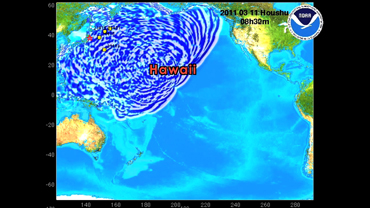Transcript
NARRATOR:
On March 11, 2011 a 9.0 magnitude earthquake off the Pacific coast of Japan generated a tsunami. This series of ocean waves sped towards the island nation with waves reaching 24 feet high. The result was devastation and utter destruction.
Towns were engulfed by water and swept away. Farmland was flooded. Tens of thousands of lives were lost. The National Police Agency reported damages to hundreds of roads, bridges, and more than 100,000 buildings. The surging water flooded rivers and destroyed harbors. In some areas along the coast, tsunami waves reached 6 miles inland. Tsunamis not only cause severe damage when they first strike land, but also as the water recedes back to sea.
Tsunamis can inflict this type of damage because of some unique features. As tsunami waves travel across ocean basins, they may be as little as a few centimeters high, but they extend down to the ocean floor. This is different than traditional waves, which are only surface features. Tsunamis can also travel hundreds of miles per hour in the open ocean. As these waves approach a coast, the shallowing ocean floor slows the waves down and pushes the water mass upwards. The quicker the ocean floor transitions from deep to shallow, the greater potential for a higher wave height. So, tsunamis that experience this sudden shift into shallow water can have the height and momentum to pack a serious punch.
Unfortunately, Japan found itself in this scenario. This image shows how abruptly the Japanese islands rise out of the ocean. Other coastal areas in the region have much more gradual slopes.
The earthquake on March 11th was the most powerful known to hit Japan, and the tsunami it created had the necessary ingredients to make it such a deadly and destructive force.
 An official website of the United States government.
Here's how you know we're official.
An official website of the United States government.
Here's how you know we're official.







